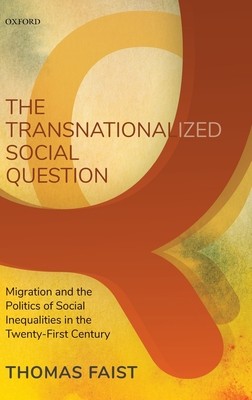
- We will send in 10–14 business days.
- Author: Thomas Faist
- Publisher: Oxford University Press, USA
- ISBN-10: 0199249016
- ISBN-13: 9780199249015
- Format: 15.8 x 23.6 x 3.1 cm, kieti viršeliai
- Language: English
- SAVE -10% with code: EXTRA
Reviews
Description
The social question is back. Yet today's social question is not primarily between labour and capital, as it was in the nineteenth century and throughout much of the twentieth. The contemporary social question is located at the interstices between the global South and the global North. It finds its expression in movements of people, seeking a better life or fleeing unsustainable social, political, economic, and ecological conditions. It is transnationalized not only because migrants and their significant others entertain ties across the borders of national states, staying in touch with family and friends, receiving or sending financial remittances in transnational social spaces. Also of importance are cross--border recruitment schemes for workers and the cross-border diffusion of norms appealed to in the case of migration--for example, the social right to decent work as a human right. Moreover, migration can become an issue of inclusion or exclusion in fields important to life
chances in the emigration, transit, or immigration states--a transnationalization of national states. And, as in the nineteenth century, political conflicts arise, constituting the social question as a public concern. In earlier periods class differences dominated conflicts. While class has always been criss-crossed by manifold heterogeneities, not least of all cultural ones around ethnicity, religion, and language, it is these latter heterogeneities that have sharpened in situations of immigration and emigration over the past decades.
EXTRA 10 % discount with code: EXTRA
The promotion ends in 22d.15:52:36
The discount code is valid when purchasing from 10 €. Discounts do not stack.
- Author: Thomas Faist
- Publisher: Oxford University Press, USA
- ISBN-10: 0199249016
- ISBN-13: 9780199249015
- Format: 15.8 x 23.6 x 3.1 cm, kieti viršeliai
- Language: English English
The social question is back. Yet today's social question is not primarily between labour and capital, as it was in the nineteenth century and throughout much of the twentieth. The contemporary social question is located at the interstices between the global South and the global North. It finds its expression in movements of people, seeking a better life or fleeing unsustainable social, political, economic, and ecological conditions. It is transnationalized not only because migrants and their significant others entertain ties across the borders of national states, staying in touch with family and friends, receiving or sending financial remittances in transnational social spaces. Also of importance are cross--border recruitment schemes for workers and the cross-border diffusion of norms appealed to in the case of migration--for example, the social right to decent work as a human right. Moreover, migration can become an issue of inclusion or exclusion in fields important to life
chances in the emigration, transit, or immigration states--a transnationalization of national states. And, as in the nineteenth century, political conflicts arise, constituting the social question as a public concern. In earlier periods class differences dominated conflicts. While class has always been criss-crossed by manifold heterogeneities, not least of all cultural ones around ethnicity, religion, and language, it is these latter heterogeneities that have sharpened in situations of immigration and emigration over the past decades.


Reviews